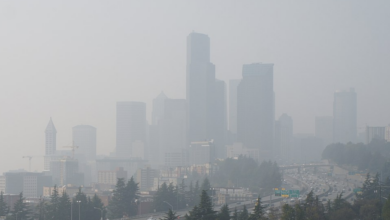Time to Retire the Term “Renewable Energy” from Serious Discussions and Policy Directives: Part 3

By Planning Engineer Russ Schussler
“Renewable good, non-renewable bad” is far too simplistic and unfortunately influential
Previous posts have argued that renewable does not necessarily mean green, sustainable or environmentally sound. Non-renewable generation may meet green goals, be highly sustainable and environmentally sound. The dichotomy adds more confusion than value. Additionally, the grid impacts of resources lumped together as renewable are so diverse that it makes no sense to speak of them as a group in that context. This posting will, through a couple examples, challenge and highlight the dangerous idea that all “renewables” are basically “good” and all “nonrenewable” are basically bad.
Do We Want More Renewables and Less Nonrenewable?
Technology and our ability to tap various resources change over time. With key technological developments, very poor options can become very good options. With extensive adoptions, good options can become very bad. Attempting to implement any option before its time is usually counterproductive. Options that are beneficial on a small scale may have serious negative consequences when scaled up. Renewable-good, non-renewable-bad is far too simplistic.
Biomass projects may unduly benefit from being classified as a renewable generation resource. Various biomass projects are frequently criticized across the political spectrum for a variety of environmental ills. Nevertheless, biomass projects meet regulatory requirements for renewable energy and are selected over alternatives that may be better by most all other relevant criteria.
Nuclear power is another example of another resource that does not work well with the renewable/nonrenewable dichotomy. Nuclear minimizes many of the problems associated with fossil fuel generation. Certainly, objections can be raised against nuclear power, but sustainability is not a major concern at this time. Current efforts to increase nuclear power face additional challenges because nuclear resources are not considered renewable. Nuclear power should be competing with various “renewable” sources based on their specific merits for specific applications and criticized based on whatever concerns can be raised. But they should not be handicapped because of the rubric of renewables.
Our energy future likely will be impacted by many new alternatives that work even less well with the renewable/non-renewable framework. Simplistic thinking can help to sideline emerging beneficial technology and advance more suspect technology. We should have many goals for are future energy sources, but properly fitting into the renewable category should not take precedence.
Could a Non-Renewable Non- Sustainable Fossil Fuel Based Resource be a Great Option?
While not wanting to promote any technology before it’s time, I will argue that we may want to keep the door open for beneficial generation options that could emerge in the future that might not be renewable. For example, huge amounts of tires end up in landfills where their decomposition can result in leeching, leading to various consequential environmental problems. Eventually we may be able to transform waste tires into energy, with net benefits across a range of environmental measures. Consider that with improved technology, large amounts of waste tires could be seen as potential fossil fuel-based resources instead of toxic dumps.
Currently, considerable efforts center around recycling waste tires and their components. There are various technologies. Circulating fluidized bed technology makes use of a hot bed of ash at 850 to 900 C. This flameless combustion can produce tremendous energy while allowing pollutants to be captured in the ash bed. Pyrolysis, heat in the absence of oxygen, may prove to be a superior technology for extracting energy from tires while minimizing their waste impact. Imagine transforming and eventually eliminating toxic waste dumps while capturing valuable synchronous, dependable electrical energy. If such plants were successful, might we clear out all dumps and exceed capabilities of future waste tires? Yes, we could. But wouldn’t it be a great thing to drive such waste to extinction in a process that was known to be unsustainable?
Such approaches are outside of the renewable/nonrenewable dichotomy. But in many cases, that may be where we want to go. Renewable thinking argues our resources must last forever. That is a true statement for many things we depend on. But transitory resources have provided great benefits in the past. As noted above, who cares if we don’t have enough waste tire dumps to last forever. This is a fossil fuel-based resource that cries out to be depleted in the interest of environmental concerns.
Don’t get Suckered into Huge Waste Because the Energy Part is Renewable
Renewable energy has a scary power to push the adoption of many marginal technologies. To illustrate this, I will summarize the solar roadways story. Many were overly enthusiastic about the potential for solar roadways when this concept exploded in 2014. Solar Roadways is a specific company, but other named companies have promoted and have run various projects seeking to produce electricity using panels on roadways. The basic approaches involve high-tech interlocking solar panels with many other additional functionalities. There were big pushes to capitalize on “abundant”, “free”, “green” power through solar roadways. The potential benefits touted also included reduced highway maintenance, jobs, warning of obstructions through weight sensors, the ability to charge vehicles using the roads, roads which would melt the snow and enhanced road signaling through embedded LED technology.
Many people were naïve and seduced by the potential benefits. Money came from many sources to the Solar Roadways Incorporated Company. The Department of Transportation provided funding for various feasibility projects. A crowdfunding drive at Indiegogo, bolstered by Georgie Takei and this video, raised $2.2 Million for Solar Roadways. Like many videos, this one looks a bit dated after nearly a decade, but it was powerful then and captured the hearts and minds of many.
Responsible people would occasionally ask me my take on solar roadways. I would probe and respond carefully. “Do you have extra money you need to spend on something? Are you wanting to do something for positive PR? Do you want to be altruistic and support preliminary research?” These weren’t their prime drivers and when they let me know that, I’d tell them that I didn’t believe getting an early start on a technology with so much development ahead could possibly help their consumers or their bottom line.
What should rational individuals have been thinking about the potential for solar roadways back then?
“This is going to take a long while at best. Nothing has been demonstrated on even a small scale. It costs an awful lot to just cover roads with asphalt. How much will it cost to cover them with glass devices that are more complicated and have greater functionality than iPhones? Do you think we can leave them exposed to the elements with trucks and cars and who knows what driving over them? What could possibly go wrong? What about road traction? This can’t easily be hooked up and made to work with controls and connected to the grid or other power supply stations. How long might individual panels last? Maintenance of such a system on the roadway seems challenging to say the least. Aren’t solar panels angled for good reasons? Shouldn’t we see a whole bunch of successful implementations of solar roofs before you might reasonably expect solar roads to be doable? Aren’t there all sorts of potential problems not yet thought of that are likely to emerge? I’m going to have to hear a lot more before I become enchanted by this one.”
But such questions did not get much visibility. People were largely enchanted or distracted by the prospect of free renewable energy.
How have these programs performed? A $3.9 million prototype in Idaho found 83% of the panels broke the first week. Had it worked, it may have been able to power a drinking fountain and lighting for a restroom. France spent over $5 million to install 2,800 photovoltaic panels covering .62 miles of road. Despite the special silicone resin intended to protect the road from 19-wheeler traffic, the panels couldn’t hold. Initially the project generated half of the expected energy, but within a few years it was closer to 10% of original projections. The impacts of thunderstorms, leaf mold and tractors were not adequately anticipated. The resin coating that helped protect the panels, generated so much noise that the speed limit had to be lowered to 79 km/h (43 mph). China opened a .62-mile solar road in 2017. However, it closed within a week due to damage from traffic and panel theft.
Today there is one functioning solar roadway today in the US, located in Peachtree City, Georgia. Data for this small 50 square meter project is hard to come by, but the anticipated annual electric output of the project could be purchased for less than $200 using the average Georgia residential rate. Maybe this small application is the right size scale for such a project a decade after the initial great promise and hope and who knows how long before the technology may prove fruitful.
These are terrible results. Maybe worse than might have been expected by even some of the most extreme of skeptics. As questionable as the big concept was, there was a plethora of smaller sub problems that needed a lot of development. Despite some of the honest appraisals available, it was hard to dampen the enthusiasm for these projects. Accompanied by much acclaim, solar roadway projects got funding and proceeded with fairly large-scale testing, despite the supporting materials being only in the most primitive stages of development.
Conclusions
The terms renewable and nonrenewable command a lot of undeserved power and influence with the public and policy makers. Rather than educating and informing, they often serve to confuse and misdirect energy policy. More sophisticated understandings around what is clean, green, sustainable, environmentally sound and workable are needed. The renewable/nonrenewable dichotomy is hurting our ability to move forward with potentially valuable workable technologies and giving too big a boost to poorly thought-out boondoggles.
Correction/Clarification: In Part II of this series, and perhaps going further back, I refer to “run of the river” hydro as being rare and mostly insignificant. This series was picked up in another forum and a commenter there noted that the US has many large hydro facilities classified as run of river. I should have referred to run of river facilities without pondage. The Corps of Engineers refers to hydro dams with extensive storage facilities (seasonal and multi-year) as stored hydro. Those with more limited storage ability (days, weeks and possibly months) are credited with “pondage” capabilities as opposed to storage. Basically, pondage allows operators to hold back flows until they are needed and useful. It is a limited form of storage. Large facilities with considerable pondage (as opposed to long term storage) are classified as run of the river (or in some documents as “basically run of the river”) by Federal authorities. While pondage is not long-term storage, it provides capacity value and allows Planners to count on these facilities to meet peak demand. Pondage allows operators to dispatch these facilities to follow load and support the system when needed. Hydro facilities with pondage are not correctly called intermittent and would be similar to a wind or solar facility with extensive battery backup. My use of the term “run of river” came from modelling experience where it referred to resources that showed up intermittently and were uncontrollable. I should have been more precise here because of the differing definitions. Hydro without pondage or storage is usually small and not significant.




